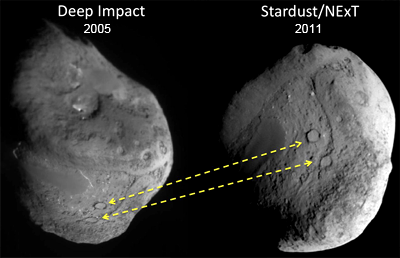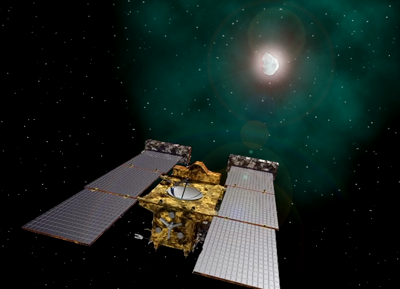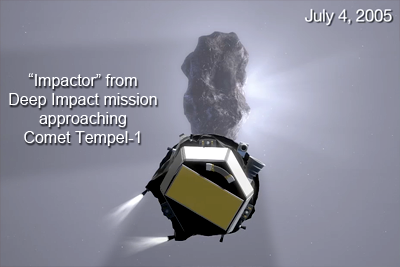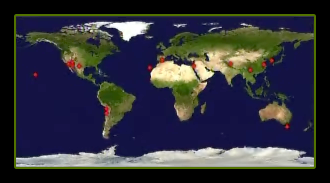 The Space Shuttle Discovery, carrying Robonaut 2 as part of its payload, has now joined the International Space Station (ISS).
The Space Shuttle Discovery, carrying Robonaut 2 as part of its payload, has now joined the International Space Station (ISS).
This is the 39th flight of Discovery, known as mission STS-133, a historical last mission before it goes into history as the first re-usable spacecraft retiring from the programme.
NASA’s Shuttle Space programme started in the late 1960s, the beginning of the Space Age. The first Shuttle was Columbia, launched on 12 April, 1981. After 133 flights, the programme is nearing its end with three of its five spacecraft still in operation.

On 24 February 2011, the day of the launch of mission STS-133, the external liquid hydrogen tank No 137 propelled Discovery into orbit. Video surveillance of the launch showed a piece of foam from the tank getting liberated during the first 4 to 6 minutes of flight. The trajectory of the released piece of foam was traced on video recordings and although it seemed to touch the Shuttle, it was thought to be of minor concern.
During the launch operation, the external liquid hydrogen tank needs to remain extremely cold, requiring foam insulation to maintain its temperature. As burning takes place, there is a rapid use of propellant with a build-up of air at the top of the tank, this air expands rapidly generating high temperatures, which sometimes results in cracks of the insulating foam, fragments of which may break off at high speed.
The integrity of the heat shield is crucial for the success of a Shuttle mission, particularly during re-entry into Earth’s atmosphere, when friction between air particles and the spacecraft travelling at 25 times the speed of sound, generates extremely high temperatures (20,000 degrees or more). Most objects arriving to Earth from space burn-up completely at this stage (e.g. meteorites seen as shooting stars). On 1st February 2003, damage to Shuttle Columbia’s heat shield tiles lead to disintegration of the spacecraft during re-entry; a disaster from which many lessons were learnt.
 As a standard procedure, a camera mounted on the Shuttle’s robotic arm is used to inspect the thermo reinforced carbon-carbon panels and heat shield tiles, looking for damage that might have occurred during launch. Data obtained from the inspection of the bottom of the wings, body and tip of the shuttle is transmitted live to Mission Control in Huston, where it is compiled into approximately 20min of video, which will be carefully examined by experts.
As a standard procedure, a camera mounted on the Shuttle’s robotic arm is used to inspect the thermo reinforced carbon-carbon panels and heat shield tiles, looking for damage that might have occurred during launch. Data obtained from the inspection of the bottom of the wings, body and tip of the shuttle is transmitted live to Mission Control in Huston, where it is compiled into approximately 20min of video, which will be carefully examined by experts.
Among other activities, the crew from Discovery will check the spacesuits that will be transferred onto the station in preparation of space-walks of astronauts Drew and Bowen on days 5 and 7 of this mission; a “centre-line camera” will be installed in the orbital docking system in preparation for docking with the ISS.
The cargo on the Discovery includes:
- The Express Logistics Carrier (ELC), a platform designed to support external payloads that will be mounted to the space station.
- Robonaut2 (R2), the first humanoid robot that will be tested in micro-gravity and ultimately used to assist spacewalk operations.
- Leonardo, the new Italian module that will be installed in the Space Station. Once its payload of supplies is emptied, it will add storage space to the station.
- The Developmental Test Objective (DTO) that will use the DragonEye 3D Flash light intensification detection and ranging (LIDAR) sensor, a 3-dimensional navigation sensor that will be tested for the Dragon Spacecraft. The latter is the first privately operated spacecraft designed to carry up to 7 passengers or cargo to and from the ISS. It will be launched by a rocket and splashdown in the Pacific Ocean on return, the project is in its final testing stages.
Previous to docking with the ISS on 26Feb at 19:16UTC (approximately 19:16 GMT), Discovery will perform a head-to-tail turn to expose its underside to the space station. From the ISS, astronauts will use cameras equipped with telephoto lenses to take photographs of the heat shield for further examination.
DISCOVERY DOCKS TO ISS – 26 FEBRUARY 2011
 At 18:00UTC on 26 February 2011, Discovery was given the “go” command from Flight Control Huston to initiate the “rendezvous-pitch manoeuvre,” flipping over as it approached the ISS. Astronauts Cady Coleman and Paolo Nespoli took many pictures from the station, using cameras fitted with 400mm and 800mm lenses respectively; a planned procedure they practiced thoroughly during training at NASA.
At 18:00UTC on 26 February 2011, Discovery was given the “go” command from Flight Control Huston to initiate the “rendezvous-pitch manoeuvre,” flipping over as it approached the ISS. Astronauts Cady Coleman and Paolo Nespoli took many pictures from the station, using cameras fitted with 400mm and 800mm lenses respectively; a planned procedure they practiced thoroughly during training at NASA.
The manoeuvre went well with spectacular views of Discovery as both spacecraft travelled over South America. Just before the flip, the shadow of ISS could be seen on the shuttle.
 Shortly after recovery from the pitch, the shuttle initiated approach for docking, moving slowly towards the station controlled manually by the crew.
Shortly after recovery from the pitch, the shuttle initiated approach for docking, moving slowly towards the station controlled manually by the crew.
At 19:10 UTC they initiated their final approach as the spacecraft travelled over Australia. Shuttle Discovery docked to the Harmony Module of the ISS at 19:14 UTC.
A slight misalignment of the spacecraft delayed the opening of the hatches. They were eventually opened at 21:16 UTC. Shortly after, the crew of Discovery entered the ISS in a joyful meeting marking the completion of the first part of mission STS-133, the last mission of this spacecraft. Almost all members had cameras to record this historical moment.




Once the astronauts were on board, they continued with their scheduled activities. Before the end of their working day, the crew installed the Express Logistics Carrier (ELC - 2), which was done exclusively via the Canadarms (No1 on board the Shuttle and No2 on the Space Station). They also transferred the spacesuits that they prepared for the spacewalks scheduled for Monday 28 Feb. and Wednesday 2nd March.


References
¤ “My Exploration - About Robonaut 2” (2011). National Aeronautics and Space Administration (NASA). [Online]. Available here. (Accessed: 25 February 2011).¤ “NASA-TV” (2011). NASA. [Online]. Available here. (Accessed: 25 February 2009).
¤ Nuscorpii223 (2008). “Answer to: Why do things burn up in the atmosphere upon re-entry?” Yahoo Answers. [Online]. Available here. (Accessed: 25 February 2009).
¤ “Space Shuttle” (2006). NASA. [Online]. Available here. (Accessed: 25 February 2011).
¤ “STS-133: Discovery” (2011). NASA. [Online]. Available here. (Accessed: 25 February 2011).
 The European Space Agency (ESA) launched the rocket Ariane-5 from French Guiana on Wednesday 16 February 2011. The spacecraft carries the Automated Transfer Vehicle (ATV) “Johannes Kepler,” named after the famous German astronomer and mathematician author of “Astronomia Nova,” published 400 years ago (ESA, 2009).
The European Space Agency (ESA) launched the rocket Ariane-5 from French Guiana on Wednesday 16 February 2011. The spacecraft carries the Automated Transfer Vehicle (ATV) “Johannes Kepler,” named after the famous German astronomer and mathematician author of “Astronomia Nova,” published 400 years ago (ESA, 2009).













 Many observatories around the world collaborated in the calculation of the trajectory of the comet. Their findings showed that Tempel-1 is gradually accelerating and probably rotating.
Many observatories around the world collaborated in the calculation of the trajectory of the comet. Their findings showed that Tempel-1 is gradually accelerating and probably rotating. Stardust was built with a set of protective shields, which proved to be effective during its encounter with Comet Wild-2 in 2004. The image shows an artistic impression of particles hitting the shields. As the model shows, the protection is located at one end of the spaceship; this means that alignment parallel to the trajectory of particles is crucial for the survival of the instruments. It also means that most instruments cannot “see” directly into the comet while it is travelling across the coma.
Stardust was built with a set of protective shields, which proved to be effective during its encounter with Comet Wild-2 in 2004. The image shows an artistic impression of particles hitting the shields. As the model shows, the protection is located at one end of the spaceship; this means that alignment parallel to the trajectory of particles is crucial for the survival of the instruments. It also means that most instruments cannot “see” directly into the comet while it is travelling across the coma.
